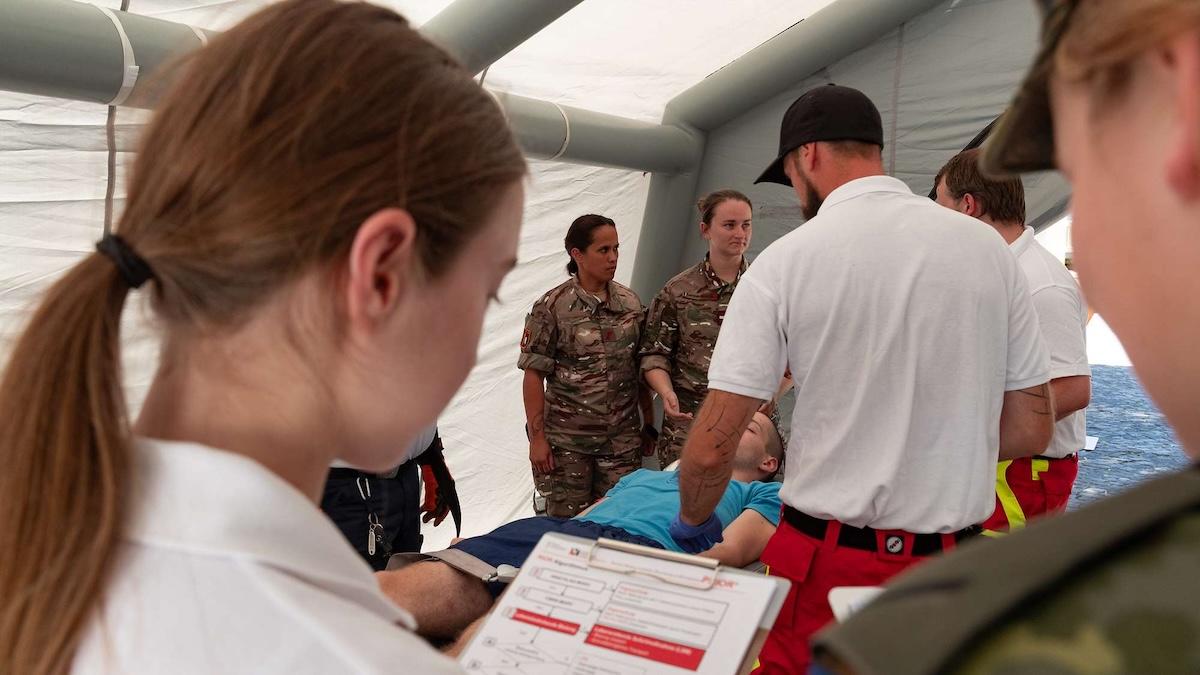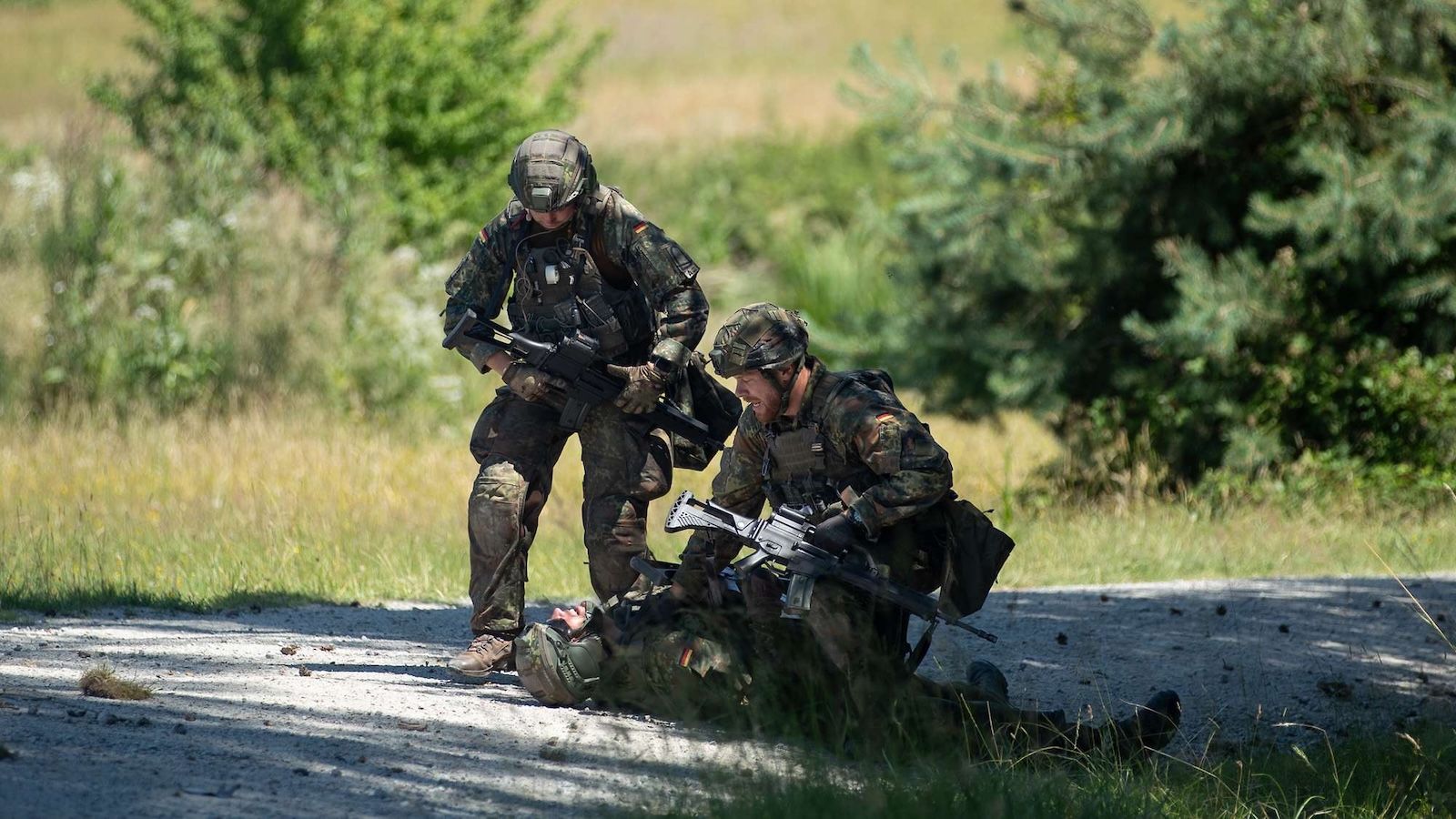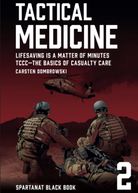Get the weekly SPARTANAT newsletter.
Your bonus: the free E-Book from SPARTANAT.

Civilian partners in the military rescue chain
During a 2025 exercise, the German Armed Forces Medical Service showcased medical care for the wounded under wartime conditions, highlighting threats like drone attacks. The drill emphasized civil-military cooperation, with civilian partners assisting in patient transport. Leaders stress the importance of integrating healthcare systems for national defense.
In Feldkirchen, the medical service demonstrates its capabilities in providing medical care to the wounded. During the 2025 information and training exercise of the German Armed Forces Medical Service, an excerpt from the state and alliance defense scenario and the integration of civilian rescue services is shown.
A whirring sound, initially quiet and barely perceptible, grows louder and alerts a pioneer squad. “Hold your ground!” orders the squad leader. But before his men can assess the danger, the whirring drone drops a grenade from the sky. Three soldiers are wounded. This training scenario, in which engineer troops are attacked by a drone while laying a mine barrier, is a lesson learned from Russia's war of aggression against Ukraine. The constant threat from the air has become a reality in the medical service's operational scenarios and thus also in the medical service's information training exercise (ILÜ San).
At the site of the impact, first responder Bravo takes over the care of the wounded. The patients are then picked up at the casualty collection point by medical personnel who are quickly accessible behind the defensive lines and operate treatment level 1, a rescue station. The seriously wounded must be transported quickly to the next treatment level. At treatment level 2, a rescue center, surgical procedures can be performed to further stabilize the patient. But how does the care continue? And how does the rescue chain work under wartime conditions?
Civilian partners integrated for the first time
“The entire healthcare system must wake up from its slumber with regard to national defense scenarios; we must prepare ourselves for a war scenario,” emphasizes Colonel General Ralf Hoffmann, Commander of the Central Medical Service. That is why cooperation with civilian partners is being demonstrated and practiced for the first time in the ILÜ San war scenario. An arriving train carrying up to 500 wounded soldiers is unloaded and distributed to hospitals in the region.
The Federal Office for Civil Protection and Disaster Assistance (BBK) will coordinate the distribution of the wounded who arrive by strategic transport by rail. Aid organizations such as the German Red Cross, Johanniter, and Malteser will transport the patients to hospitals after they have been assessed.

The commander of the German Armed Forces Health Command, General Staff Physician Johannes Backus, outlines the next steps to make the health system fit for war: “Networking with powerful and broadly based partners in the civilian health system is the central challenge in providing care for the wounded in national and alliance defense.”
Civil-military cooperation is being expanded
The ILÜ San demonstrates that the first steps in civil-military cooperation have already been taken. The distribution of the wounded to civilian hospitals works well in the exercise scenario. However, cooperation must be further intensified. This view is shared by BBK President Ralph Tieser: “We will only be able to provide care and transport for large numbers of injured people if the civilian and military sides coordinate closely. ILÜ San shows how we are moving ever closer together in the provision of medical care in order to make the rescue chain more crisis-proof.”
Surgeon General Backus sums it up: “Civil-military cooperation in healthcare and its extensive networking are of particular importance for the successful overall planning of the German operations plan.”
With regard to the need for joint exercises, Colonel General Hoffmann in Feldkirchen concludes: “The ILÜ San demonstrates that the integration of the civilian side into our exercises can work. We will continue along this path.”
SPARTANAT is the online magazine for Military News, Tactical Life, Gear & Reviews.
Send us your news: [email protected]
Ad
similar
Get the weekly SPARTANAT newsletter.
Your bonus: the free E-Book from SPARTANAT.



